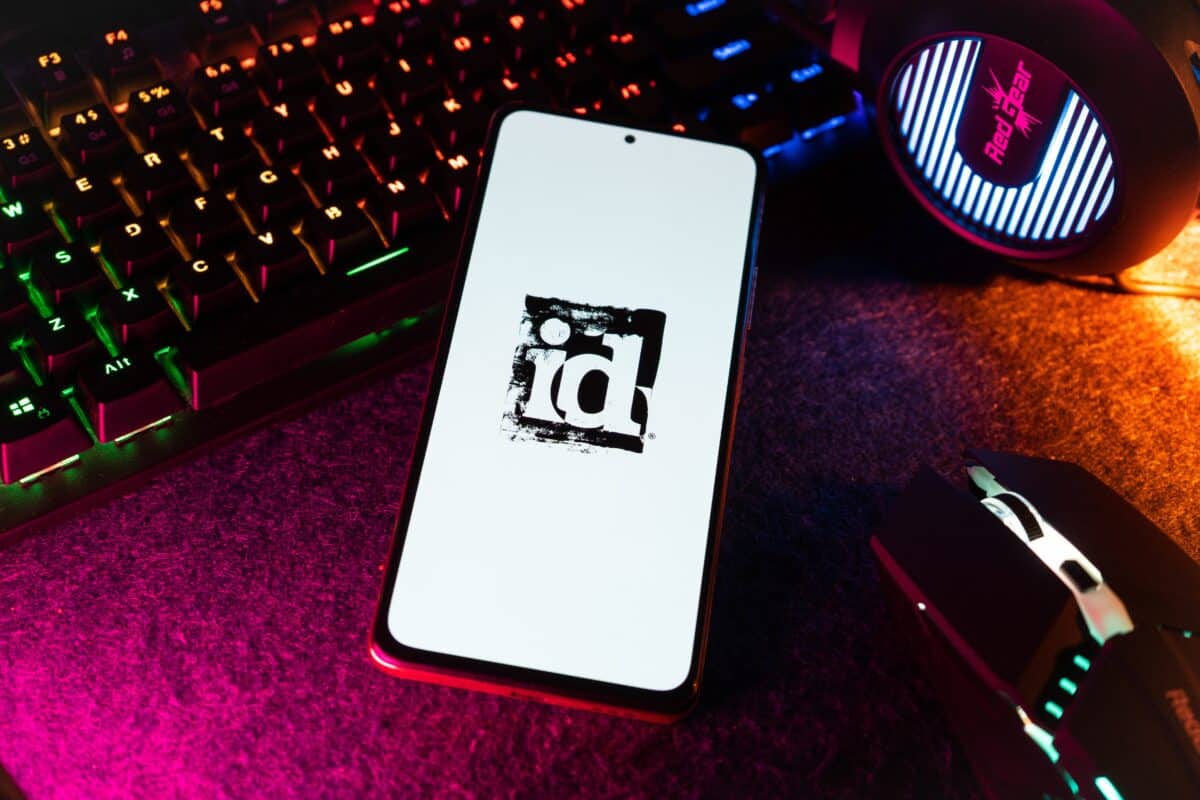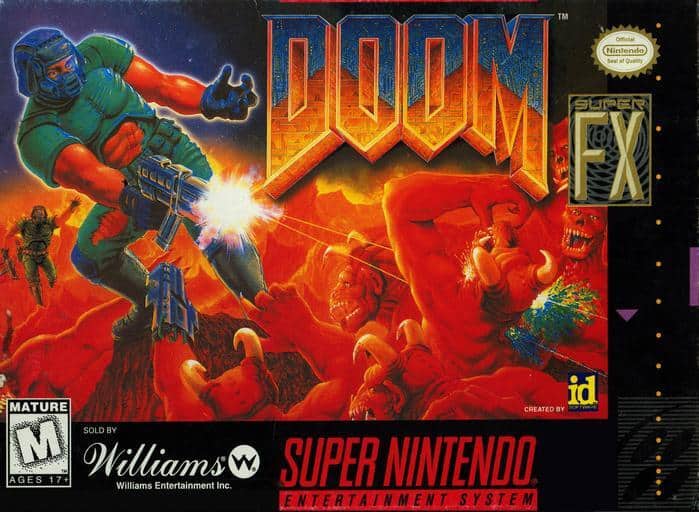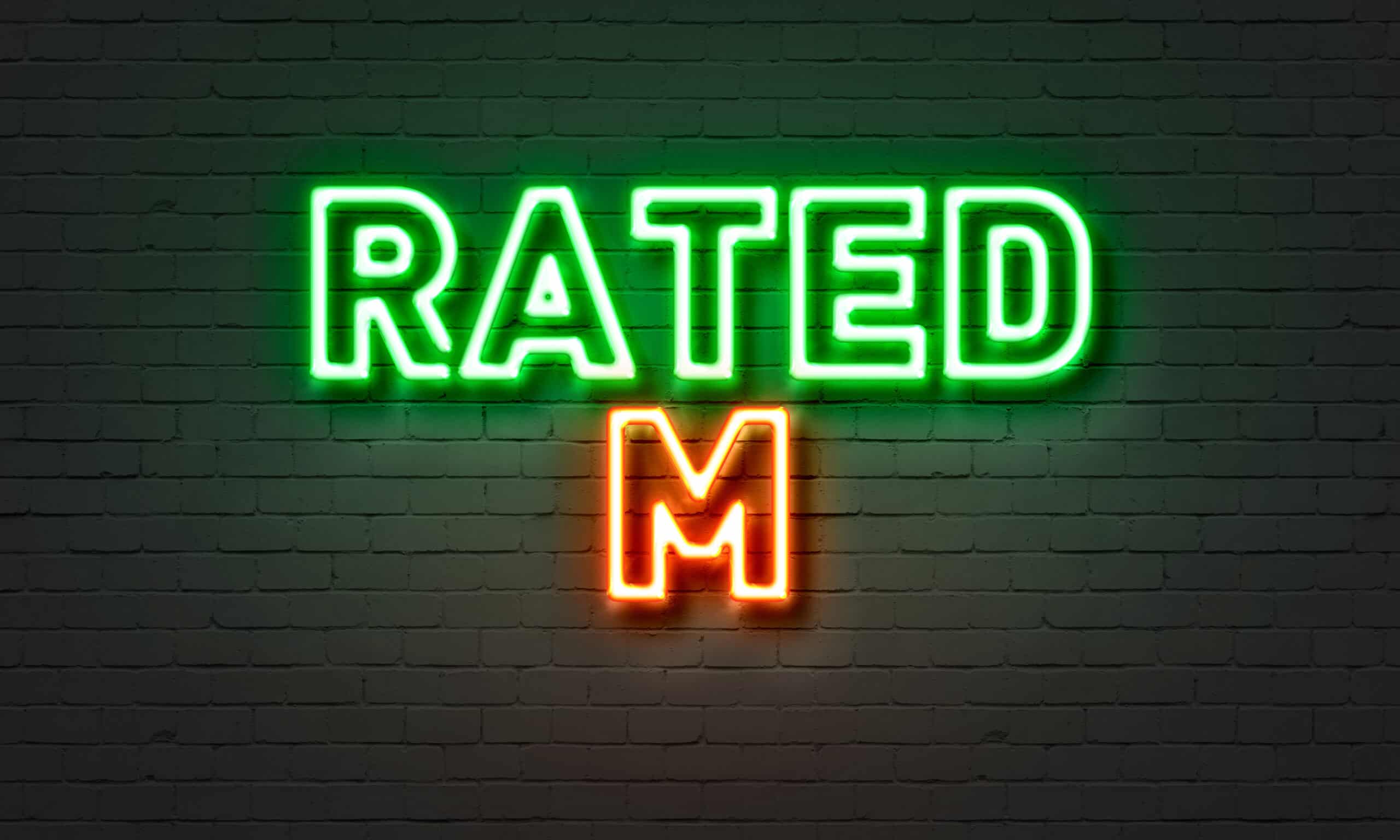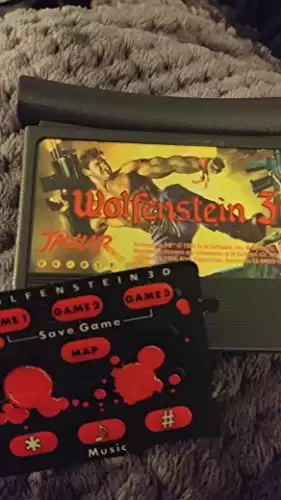Nintendo Co., Ltd. began as a handmade playing cards company in 1889. Then, when video games began to boom more than 75 years later, Nintendo switched gears and got to work on their first ever home console: the Color TV-Game. The rest, as they say, was history.
Nintendo quickly became known for some of the most successful family-friendly franchises in video game history. Mario, The Legend of Zelda, Donkey Kong, Kirby, Pokémon, Animal Crossing…that’s why Nintendo’s first M-rated game matters so much.
Content Ratings
Whether it be the TV Parental Guidelines, the Motion Picture Association, or the Entertainment Software Rating Board, one thing’s for certain: when watching TV, enjoying a movie, or playing a video game, you’re going to encounter an age and content rating.
TV-G, G, E… they all mean the same thing. The content — a television show, a movie, a video game — is appropriate for consumers of all ages. Conversely, TV-MA, R, M… they all mean the same thing, too. The show, film, or game is going to contain anything and everything from intense violence to extreme blood and gore to graphic sexual content to very strong language. In other words, for mature audiences only.
From Mario to Link, Kirby to Pikachu, and Donkey Kong to Tom Nook, there’s virtually nothing about Nintendo’s most popular characters and franchises that would suggest any sort of violence, blood, gore, sexual content, or strong language. After all, Nintendo games are typically very colorful, super cheerful, incredibly easygoing, and acceptable for all ages, right?
Looking at Nintendo’s first M-rated game (as well as the history of the M rating itself), it’s clear this isn’t completely true. In fact, Nintendo was home to the first console game to receive an M rating. Here’s what happened.
What Was Nintendo’s First M-Rated Game?

©sdx15/Shutterstock.com
To understand the history of Nintendo’s first M-rated game, we must first understand the history of the developer responsible for the game itself. As it happens, this would be id Software: the Texas-based developer founded by four former Softdisk employees in 1991.
Beginning with the release of Wolfstein 3D in 1992, id Software quickly became known for fast-paced, hyper-violent 3D games. At this point in video game history, most games couldn’t be more different from this description. The speed, the violence, and the graphics of id Software games made Wolfstein 3D a hit.
Naturally, all eyes were on what id Software would do next. In 1993, the answer became clear: Doom, a first-person sci-fi shooter that drew from equal parts Dungeons & Dragons, Evil Dead II (1987), and Aliens (1986).
Along with effectively establishing the FPS (first-person shooter) video game subgenre, Doom accomplished another feat: it broke the brains of just about every conceivable authority, from parents to school districts to universities to retailers the world over. All eyes were already on the video game industry for the violence of Mortal Kombat (1992), but Doom sent the industry over the edge.
Mortal Kombat and Doom acted like a one-two punch for the video game industry. (Ironic, considering the former is a fighting game.) Their stylized violence and their massive popularity made them an easy target for video game critics, policymakers, and religious institutions across the country.
As Nintendo continued to grow in popularity due to the massive success of the SNES (Super Nintendo Entertainment System), it was something of a perfect storm when Doom reached the console in 1995. The newly established ESRB (Entertainment Software Rating Board) slapped the game with an M.
ESRB Ratings
| Rating | Abbreviation | Description | Example |
|---|---|---|---|
| Rating Pending | RP | Used to describe games yet to be rated. | The Legend of Zelda: Tears of the Kingdom (2023) |
| Rating Pending, Likely Mature | RP – Likely Mature 17+ | Intended for games without an official rating but are expected to receive the M rating. | Grand Theft Auto VI (TBD) |
| Early Childhood | EC | While no longer used, the EC rating is designated for preschooler games. | Sesame Street: Cookie’s Counting Carnival (2010) |
| Everyone | E | Originally known as K-A, or Kids to Adults, the E rating is for games appropriate for all age groups. | Mario Kart 8 Deluxe (2017) |
| Everyone 10+ | E10+ | Introduced in 2005, E10+ is for games more intense or advanced than E but not as mature as T or M games. | The Legend of Zelda: Breath of the Wild (2017) |
| Teen | T | Used to describe games appropriate for anyone 13 and up. | Hyrule Warriors: Age of Calamity (2020) |
| Mature 17+ | M | Designated for games that shouldn’t be played by anyone under 17 years old. | Mortal Kombat 11 (2019) |
| Adults Only 18+ | AO | Reserved for the most violent, most explicit games. It’s rarely used, but it serves its purpose. | Manhunt 2: Uncut Version (2009) |
How Did the M Rating Come Into Existence?

©openretro.org – License
As id Software was hard at work on Doom and its subsequent SNES port, the United States government was taking Mortal Kombat to court. And no, that doesn’t mean they were setting up their gaming systems, taking turns to see who was best.
In early December of 1993, the United States Senate Committee on Governmental Affairs joined forces with the Senate Judiciary Committee to hold a series of congressional hearings on violence in video games and its potential impact on the nation’s children. The committees put both Nintendo and Sega on the stand.
Mortal Kombat wasn’t the only target. The government was just as worked up over Night Trap, an interactive movie from 1992 that requires players to spy on teenage girls having a sleepover in a vampire-infested home. Players were given access to surveillance footage of the house and tasked with trapping vampires before they can do harm to the girls.
Naturally, due to the game’s sexual themes and its graphic violence, it was just as much of an issue for lawmakers as Mortal Kombat famously was. The only way the video game industry could put a stop to this questioning was to take action.
This action came in the form of the Entertainment Software Ratings Board, a product of the Entertainment Software Association that would provide age- and maturity-based ratings on video game content sold in North American retailers. K-A (now E) games are appropriate for all ages.
E10+ are okay for anyone aged ten and up. T games are intended for teens or older. M games are meant for mature audiences aged 17 and up. There are also AO — or Adults Only — games, but these are quite rare. When Doom hit the SNES in 1995, it became the first video game to get an M rating.
What Came After Nintendo’s First M-Rated Game?
After Doom became Nintendo’s first M-rated game, the floodgates opened in the video game industry. In due time, the M rating became as commonly accepted (and, for teens, as frequently ignored) as the Motion Picture Association’s R rating or the TV Parental Guidelines’ TV-MA rating.
At first, however, it was viewed as a kiss of death. No one wanted an M-rated game if it meant decreased sales, fewer players, or disgruntled gamers. Especially Nintendo, who hoped to cling to that safe, accessible image — even with the first M rating now attached to Doom.
Yet, it didn’t take long for the mature rating to do the opposite of what was initially feared. Instead of turning people away, the M rating had little to no impact on sales. When you consider the fact that 76% of video game sales come from people 18 or older, it’s hard to consider the M rating a real issue.
This is especially true when looking at the ten top-selling video games of all time, two of which are M-rated. (Grand Theft Auto V with 170 million units sold and more than $7 billion in profits, and Red Dead Redemption 2 with 46 million sold.)
It’s the same with the R rating. For those it’s meant to protect — namely, those under 17 years of age — it’s viewed as an annoyance, a frustration, an exclusion, an inconvenience; any word you’d like to use to describe being blocked from enjoying the thing.
For the majority, however, it’s nothing more than another thing we have to show our ID to purchase. In the end, there are far more people buying video games above 17 than under. Nintendo — and every other brand from A to Z (or rather Atari to Sony) — soon realized this and proceeded with business as usual.
M-Rated Nintendo Games: A List of the Biggest Titles
- Conker’s Bad Fur Day. Released for the Nintendo 64 on March 5th, 2001. Rated M for “Animated Violence, Mature Sexual Themes, Strong Language.”
- Eternal Darkness: Sanity’s Requiem. Released for the Nintendo GameCube on June 24th, 2002. Rated M for “Blood and Gore, Violence.”
- Max Payne. Released for the Game Boy Advance on December 16th, 2003. Rated M for “Blood, Drug Reference, Violence.”
- Bully: Scholarship Edition. Released for the Nintendo Wii on March 4th, 2008. Rated M for “Animated Blood, Crude Humor, Language, Sexual Themes, Use of Alcohol and Tobacco, Violence.”
- MadWorld. Released for the Nintendo Wii on March 10th, 2009. Rated M for “Blood and Gore, Drug Reference, Intense Violence, Mature Humor, Sexual Themes, Strong Language.”
- Bayonetta 2. Released for the Wii U on October 24th, 2014, and for the Nintendo Switch on February 16th, 2018. Rated M for “Blood and Gore, Intense Violence, Partial Nudity, Strong Language, Suggestive Themes.”
- The Witcher 3: Wild Hunt – Complete Edition. Released for the Nintendo Switch on October 15th, 2019. Rated M for “Blood and Gore, Intense Violence, Nudity, Strong Language, Strong Sexual Content, Use of Alcohol.”
- Agony. Released for the Nintendo Switch on October 31st, 2019. Rated M for “Blood and Gore, Intense Violence, Nudity, Strong Language, Strong Sexual Content.”
- Grand Theft Auto: The Trilogy – The Definitive Edition. Released for the Nintendo Switch on November 11th, 2021. Rated M for “Blood and Gore, Drug Reference, Intense Violence, Sexual Content, Strong Lyrics.”
The image featured at the top of this post is ©ibreakstock/Shutterstock.com.



